Radxa OS Usage
Introduces system login, network connection, etc to let user to be familiar with the system quickly.
User name and Password
The user name and password added by default to the Radxa ZERO 3 series are:
User name:radxa/rock
Password: radxa/rock
Serial Debug
Most of radxa's products define pins 8 (TX) and 10 (RX) on the GPIO pins as UART serial communication interfaces to make it easier to troubleshoot problems in the early startup phase of the system.
Preparation
- Radxa product with GPIO, compatible power supply
- PC
- USB to TTL Serial Cable
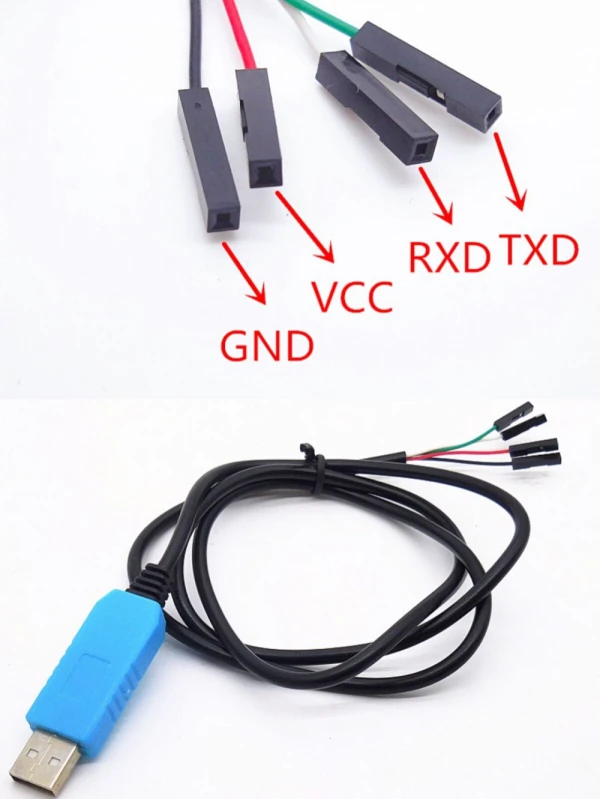
For Radxa products based on Rockchip chips, the default UART configuration is 1500000n8 without flow control.
Please check if your USB to TTL serial cable supports 1.5M baud rate:
- Based on CP210X and PL2303x some products have baud rate limitations.
- Based on FT232RL, some products have power issues.
The Flowing text uses a serial cable based on CH340.
Serial Connection
As shown below, connect the USB to TTL serial cable:
| Radxa SBC | Connection | Serial Cable |
|---|---|---|
| GND (pin 6) | <---> | Black line |
| TX (pin 8) | <---> | White line |
| RX (pin 10) | <---> | Green line |

Please do not connect the red power line!
Using Serial Tools
For Radxa products based on Rockchip chips, the default UART configuration is as follows:
baudrate: 1500000
data bit: 8
stop bit: 1
parity : none
flow control: none
- Windows
- Linux
- Mac
Windows
Putty is a serial tool that supports multiple baud rates on Windows. Here's how to use Putty to connect to the serial port.
-
Download Putty and install it.
-
Plug the USB to TTL serial cable into the PC, check the Device Manager to find the COM number. Here, assume it is COM3.
-
Open Putty and set it up as follows:
- Select Session in the left column, set the serial line to COM3, baud rate to 1500000, and connection type to Serial.
- Write radxa-rock5 in the Saved Sessions column and click Save.
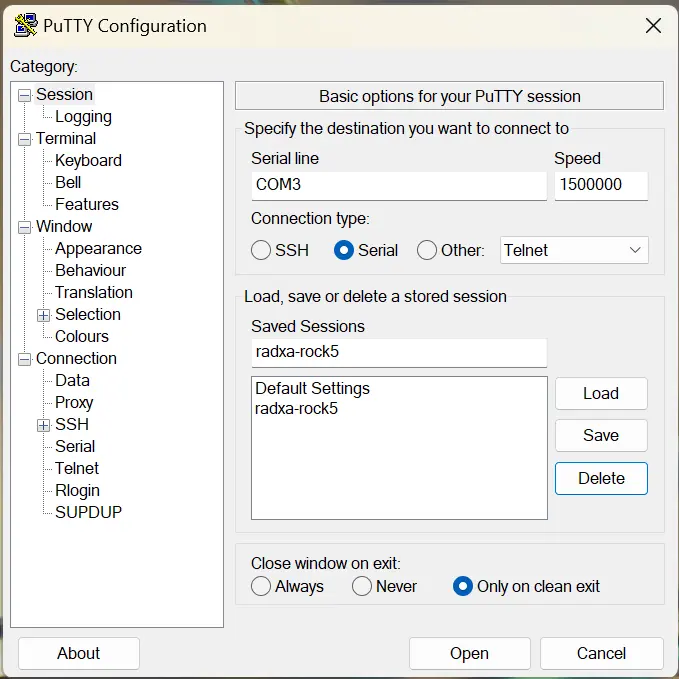
- Select Serial at the bottom of the left column and configure it as follows:
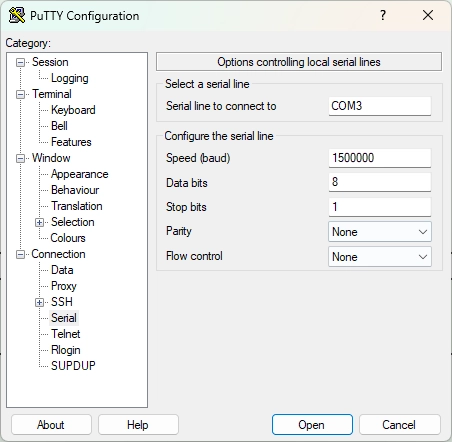
- After setting up, click Open to open the serial port. Make sure the TTL end is correctly connected, then turn on the power to the board.
Linux
Minicom is a serial tool that supports multiple baud rates on Linux. Here's how to use Minicom to connect to the serial port.
- Plug the USB end of the serial cable into the host PC, then find the serial device:
On the terminal, type dmesg | tail to get a printout similar to the following:
[10.654076] usb 1-6.4.3: new full-speed USB device number 103 using xhci_hcd
[10.755730] usb 1-6.4.3: New USB device found, idVendor=0403, idProduct=6001
[10.755732] usb 1-6.4.3: New USB device strings: Mfr=1, Product=2, SerialNumber=0
[10.755733] usb 1-6.4.3: Product: USB <-> Serial
[10.755734] usb 1-6.4.3: Manufacturer: FTDI
[10.756728] ftdi_sio 1-6.4.3:1.0: FTDI USB Serial Device converter detected
[10.756750] usb 1-6.4.3: Detected FT232BM
[10.757195] usb 1-6.4.3: FTDI USB Serial Device converter now attached to ttyUSB0
As shown in the last line, /dev/ttyUSB0 is the newly inserted serial device.
Maybe there is no permission to read and write the serial port.
Temporary solution: Change the permission with the chmod command
sudo chmod 777 /dev/ttyUSB0
Permanent solution: Add the current user to the dialout group
sudo usermod -aG dialout $USER
- Install minicom:
sudo apt-get update
sudo apt-get install minicom
- Set up minicom:
Please add the current non-root or non-sudo user to the plugdev group first.
sudo usermod -aG plugdev $USER
Edit ~/.bashrc and add the following parameters. After reopening a new terminal, it will take effect.
alias minicom='minicom -w -t xterm -l -R UTF-8'
Create and edit the file ~/.minirc.1500000-usb0, add the following content:
pu port /dev/ttyUSB0
pu baudrate 1500000
pu bits 8
pu parity N
pu stopbits 1
pu rtscts No
- Run the following command to connect to the device, specifying the parameter 1500000-usb0 to use the above configuration.
minicom 1500000-usb0
Mac
Picocom is a serial tool that supports multiple baud rates on Mac. Here's how to use Picocom to connect to the serial port.
- Install picocom
% brew install --build-from-source radxa/picocom/picocom
- Open picocom
% picocom -b 1500000 -d 8 /dev/tty.usbserial-2130
FAQs
- When using the debug console, the system startup information is displayed on the screen, but I cannot enter text using the keyboard?
It may be that
Hardware Flow Controlis enabled by default. After turning offHardware Flow Control, it should return to normal.
Setting Network
Connect WiFi
nmcli device wifi #Scan WiFi
sudo nmcli device wifi connect <ssid> password <passwd> #Connect WiFi
Ethernet
Automatic login
For faster access to the desktop, you can set the desktop to log you in automatically by modifying the /etc/lightdm/lightdm.conf file.
sudo vim /etc/lightdm/lightdm.conf
Find [Seat:*] configured #autologin-user= ,modify this configuration to the user you need to log in as
[Seat:*]
...
autologin-user=radxa
autologin-user-timeout=0
...
Language Settings
- Install Simplified Chinese fonts:
sudo apt-get install fonts-wqy-zenhei
- Set the system language to Chinese desktop:
sudo dpkg-reconfigure locales
- Select Chinese Language
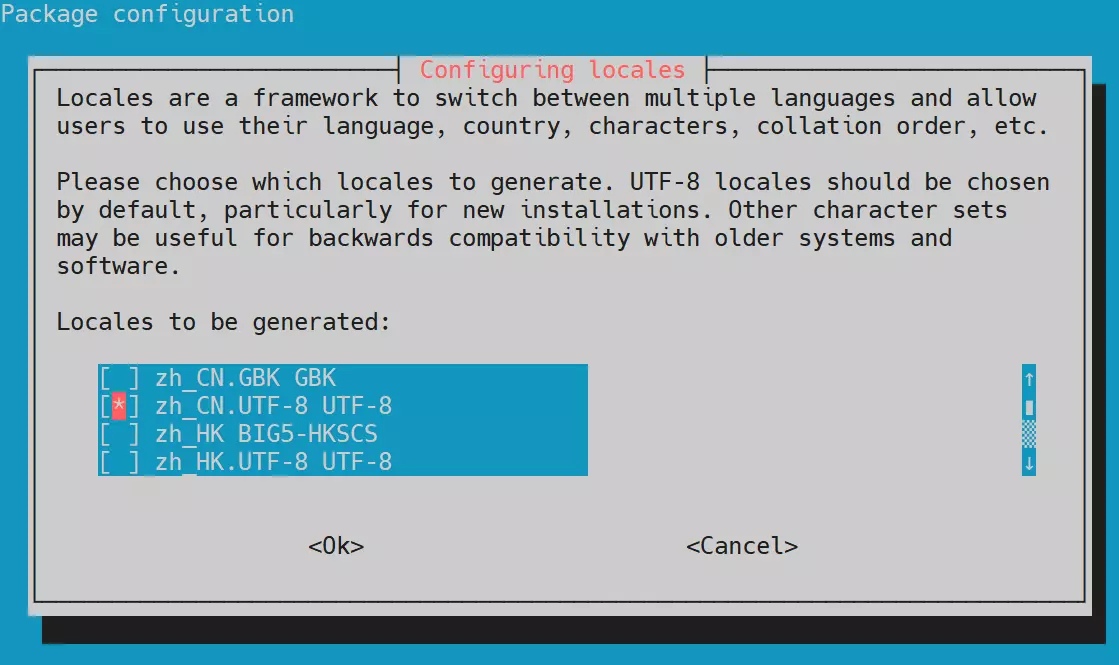
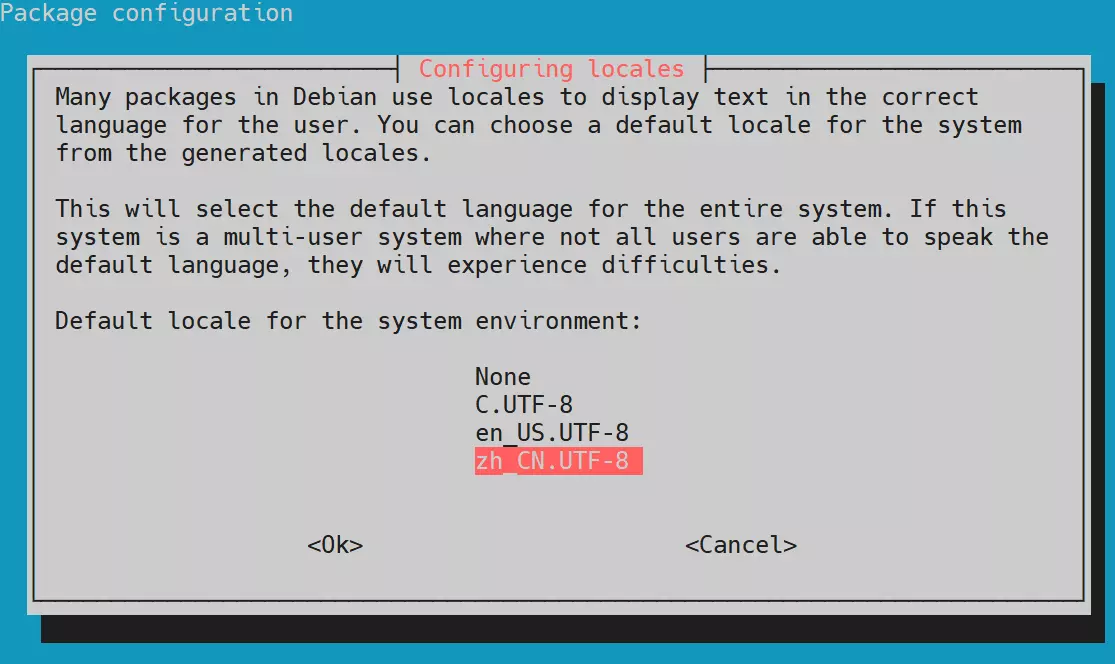
- Just reboot the system
sudo reboot
For other languages, you can refer to the configuration steps above.
Remote Login
SSH Login
After connecting to the network, you can use SSH to debug remotely, the official Debian image has enabled SSH by default, you just need to get the IP of the board to use SSH to connect.
- Debian/Ubuntu
ssh [username]@[hostname]
or
ssh [username]@[IP address]
Example:
ssh [email protected]
You can connect to the Debian system after entering your user password.
- Windows
There are a number of SSH tools available for Windows, here's Mobaxterm to show you how to connect.
Click Session in the upper left corner to create a new SSH connection, enter the IP of the board in the Remote host field, tick Specify usernema and fill in the user who logs in, and then double-click on the session to start the connection and enter the login password to connect.
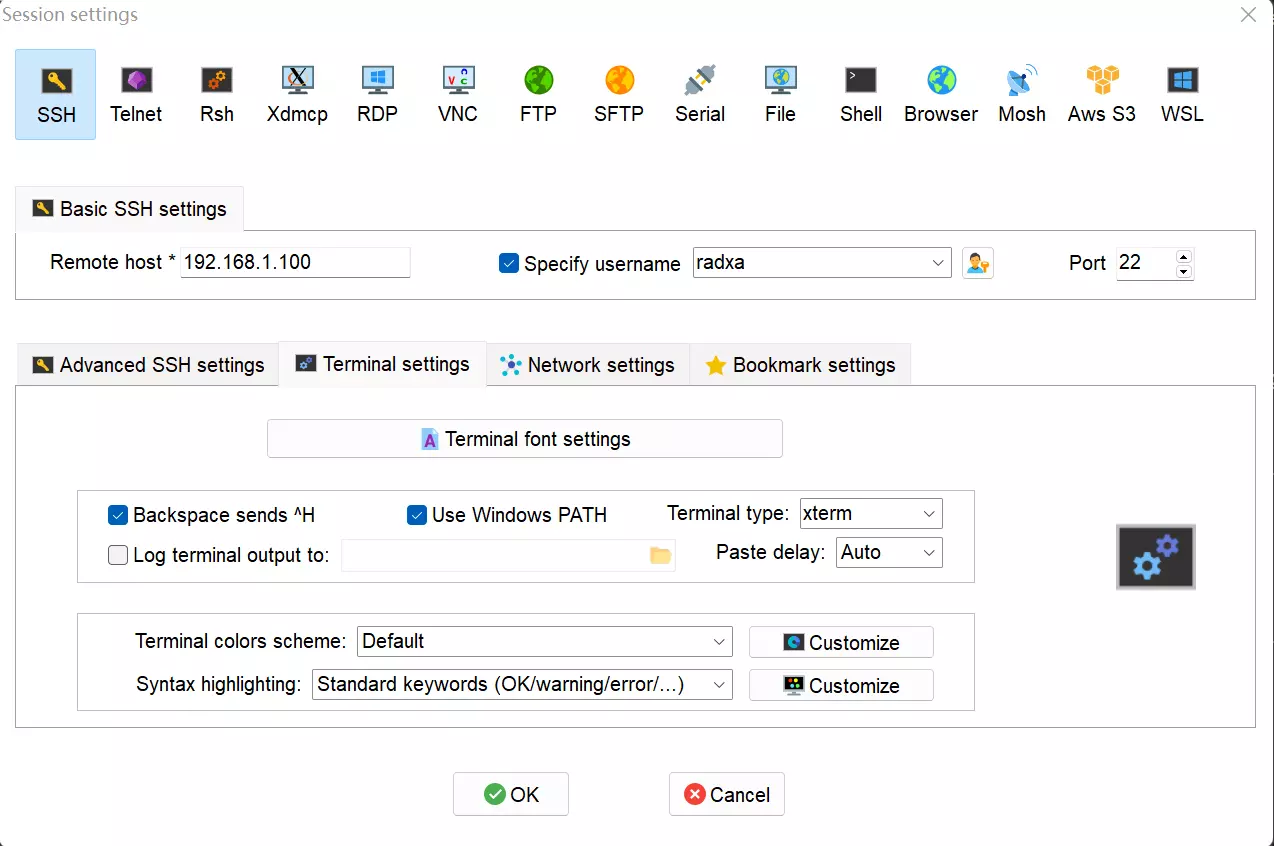
VNC remote desktop
- Installing the VNC Server
- Installing TigerVNC Server and dbus-x11 dependencies
sudo apt-get update
sudo apt-get install tigervnc-standalone-server
sudo apt-get install dbus-x11
- To complete the initial configuration of the VNC server after installation, use the vncserver command to set the security password and create the initial configuration file:
vncserver
Would you like to enter a view-only password (y/n)? n
Prompt whether just watch, it is recommended to choose no, enter n, so that the remote can be operated, rather than just watch, you can choose their own practical situation
- Configuring the VNC Server
vncserver -kill :*
touch ~/.vnc/xstartup
chmod +x ~/.vnc/xstartup
Edit ~/.vnc/xstartup, copy the following configuration in and save it
#!/bin/sh
unset SESSION_MANAGER
unset DBUS_SESSION_BUS_ADDRESS
unset XDG_RUNTIME_DIR
/etc/X11/xinit/xinitrc
[ -x /etc/vnc/xstartup ] && exec /etc/vnc/xstartup
[ -r $HOME/.Xresources ] && xrdb $HOME/.Xresources
xsetroot -solid grey
#vncconfig -iconic &
startkde &
- Once the configuration is edited, restart the VNC server:
vncserver -localhost no
- Viewing the VNC Server
radxa@radxa-zero3:~$ vncserver -list
TigerVNC server sessions:
X DISPLAY # RFB PORT # PROCESS ID SERVER
:1 5901 4029 (stale) Xtigervnc
- Using mobaxterm to connect to remote desktop
Click Session in the upper left corner to create a new VNC connection, enter the board's IP in the Remote hostname of IP address field, and the port number obtained by vncserver -list.
